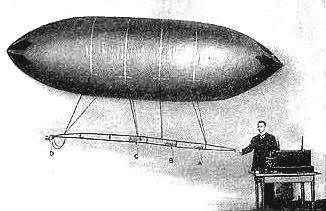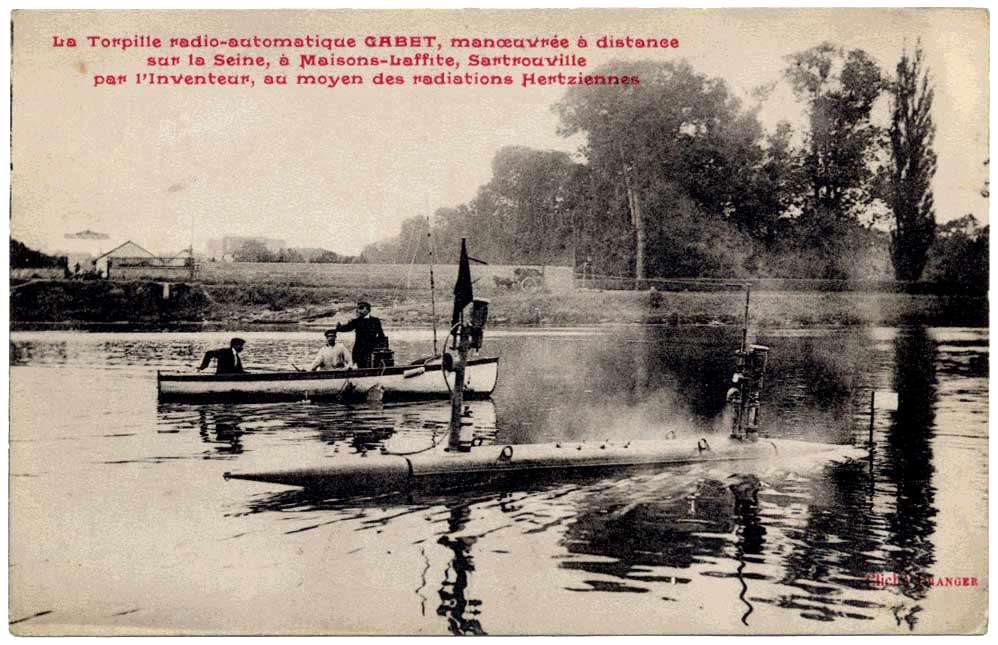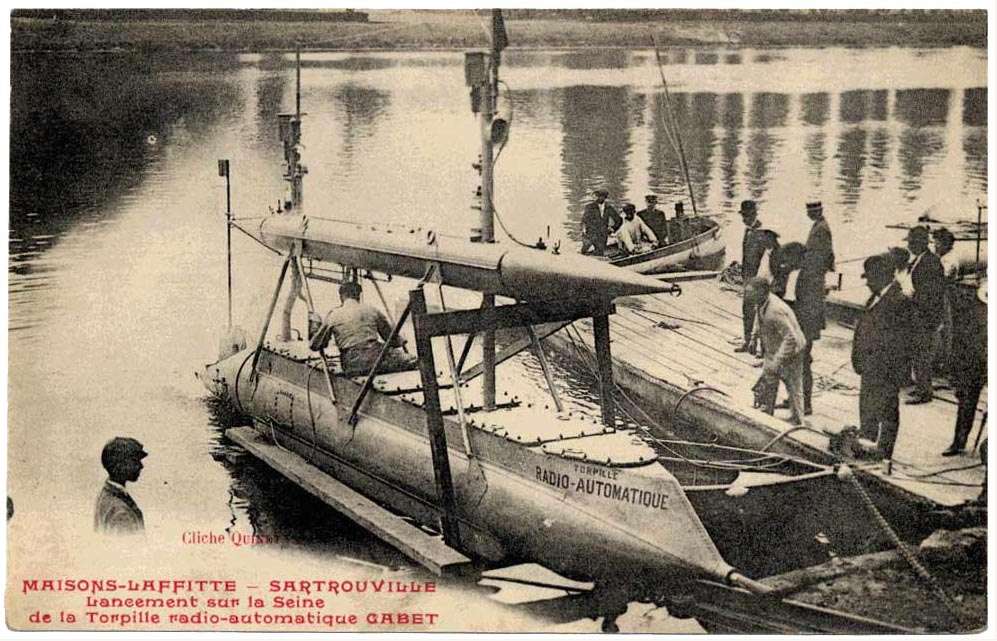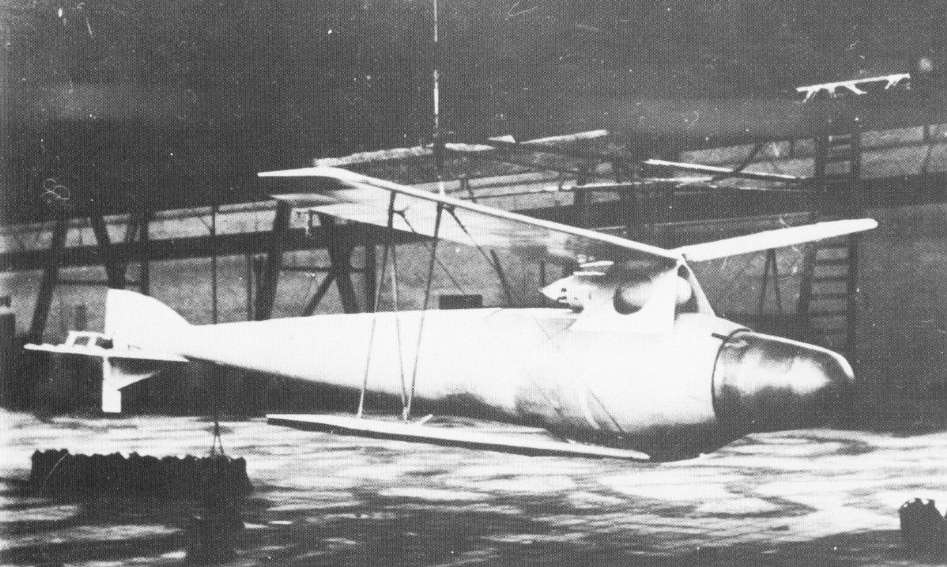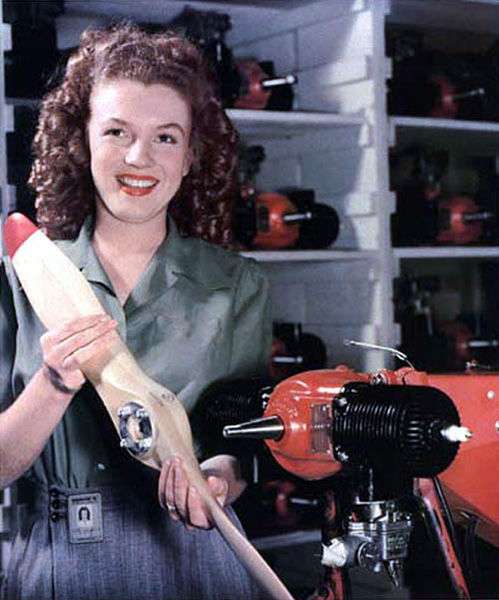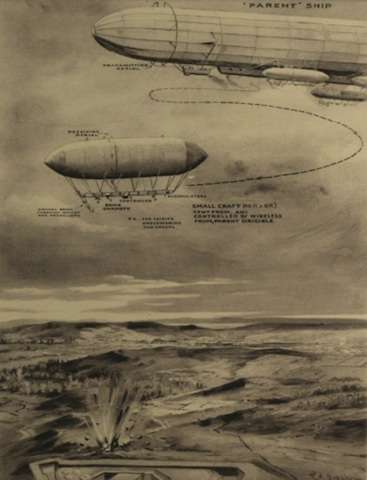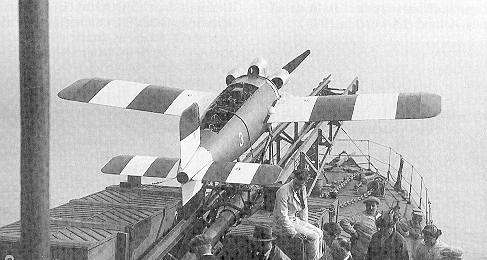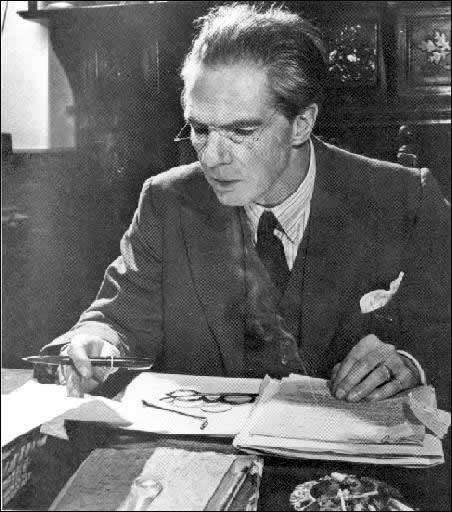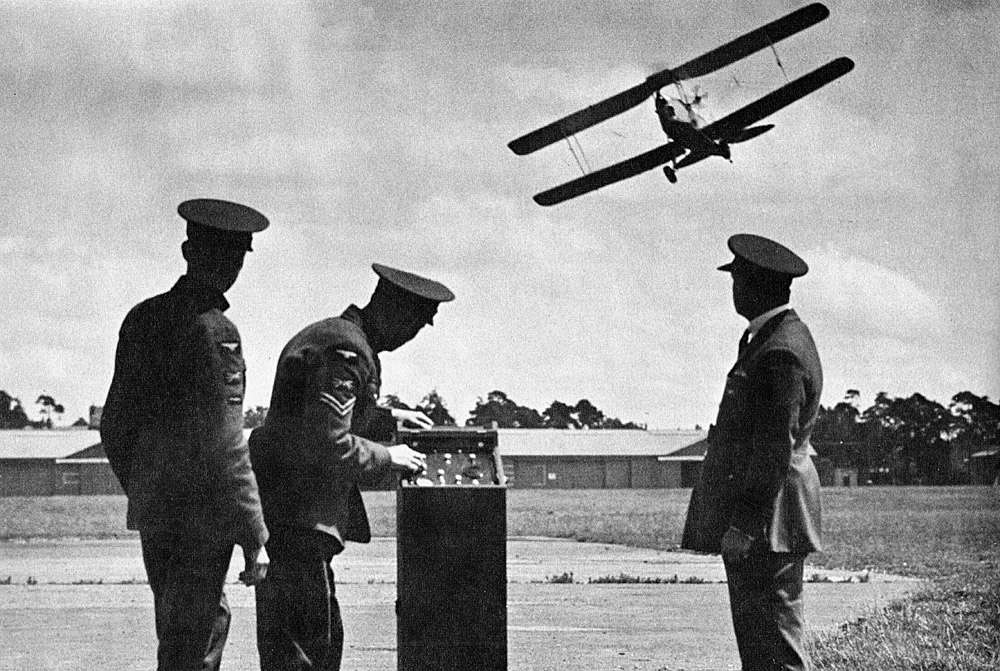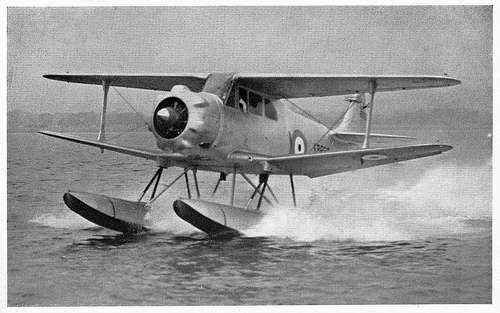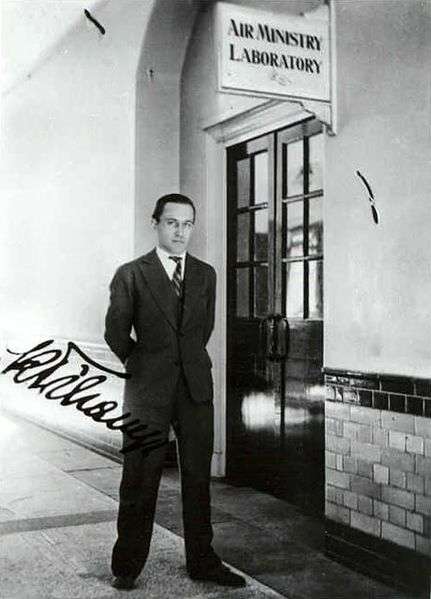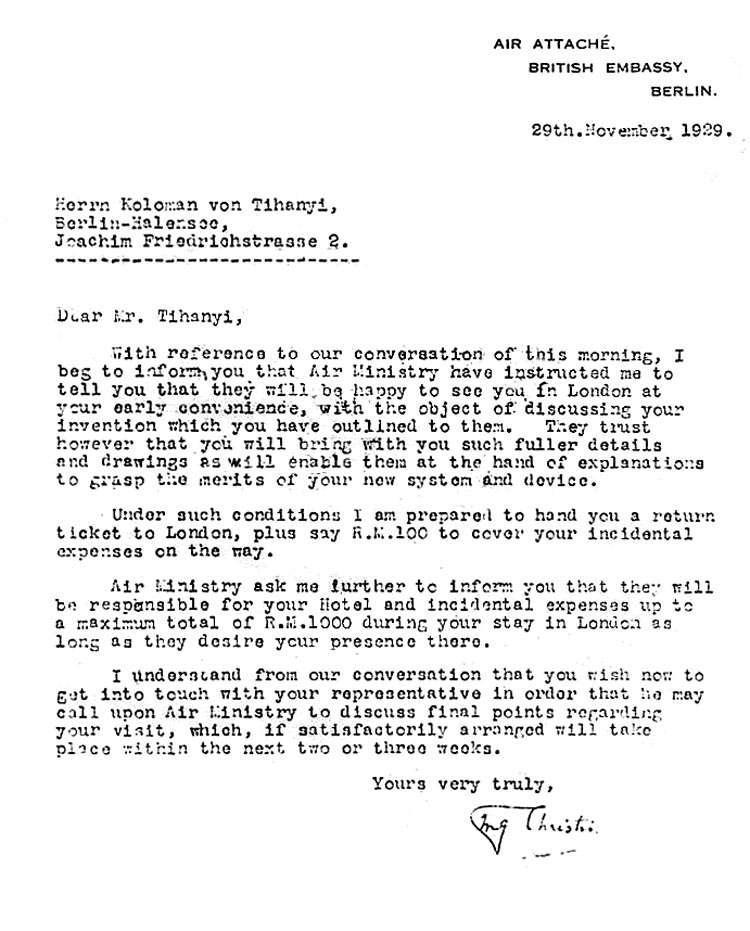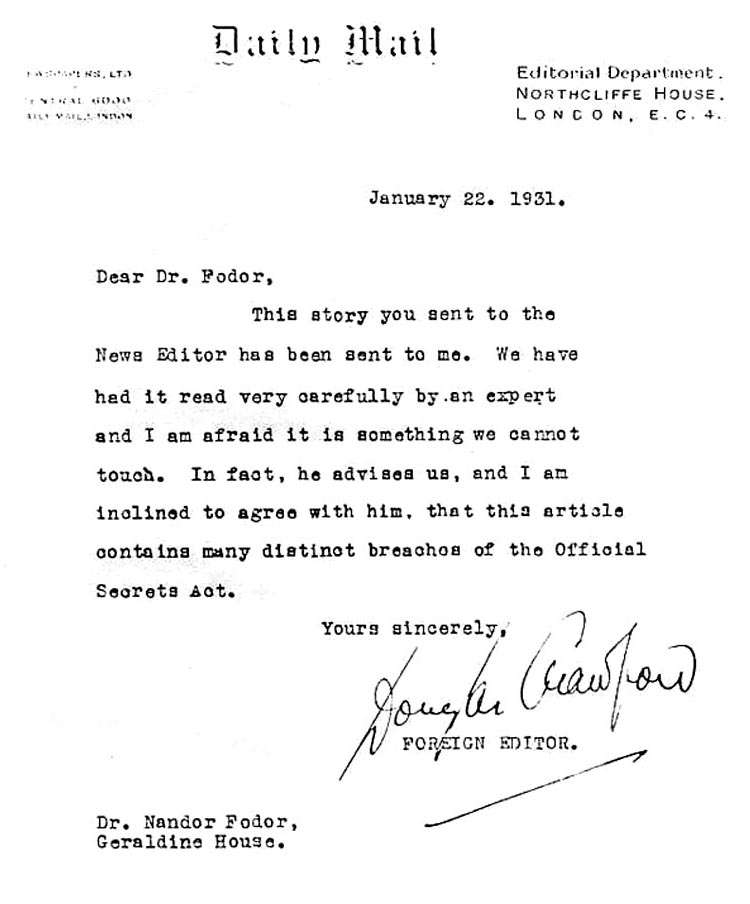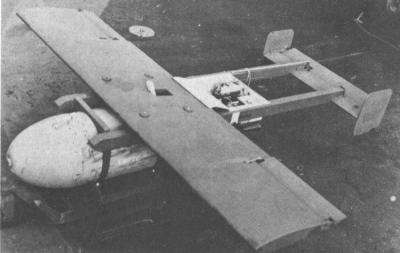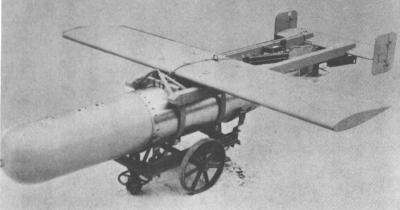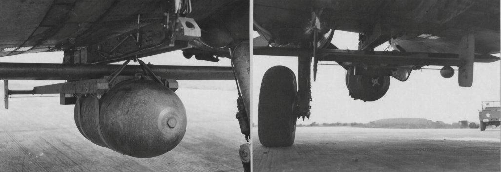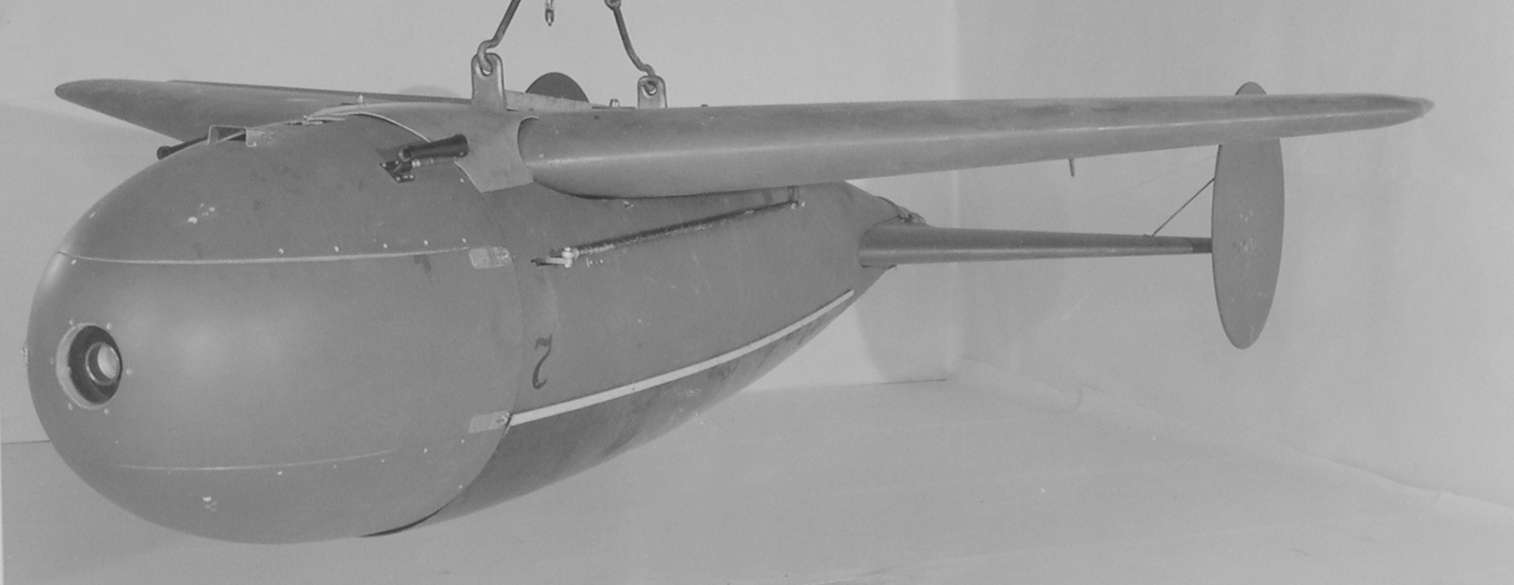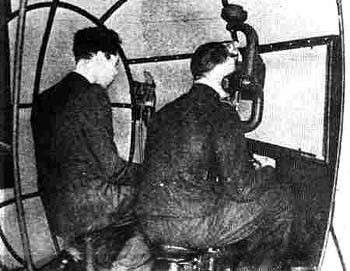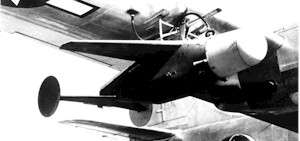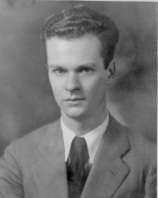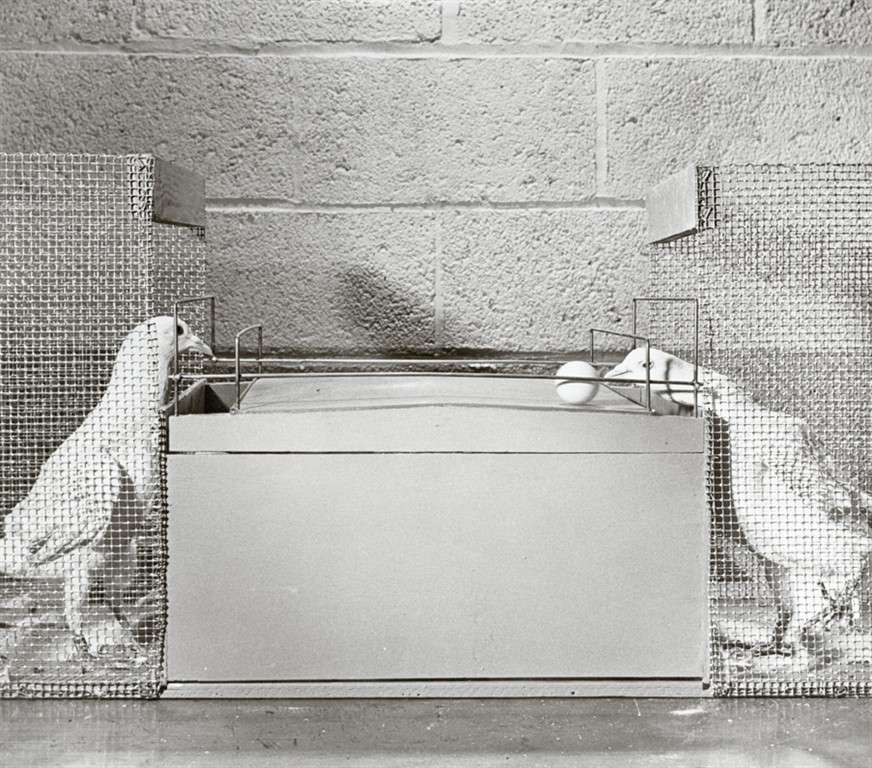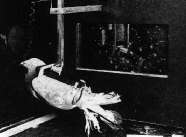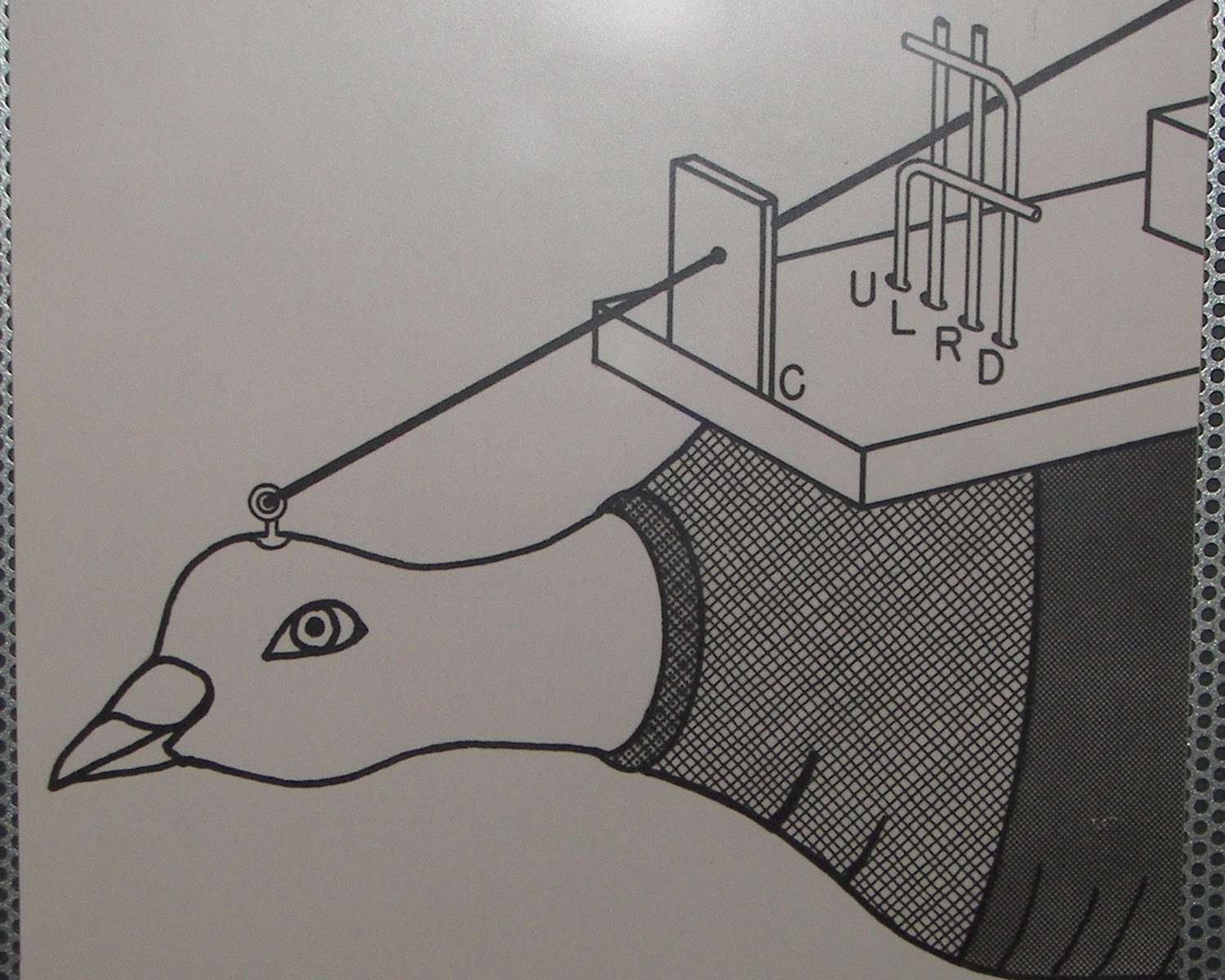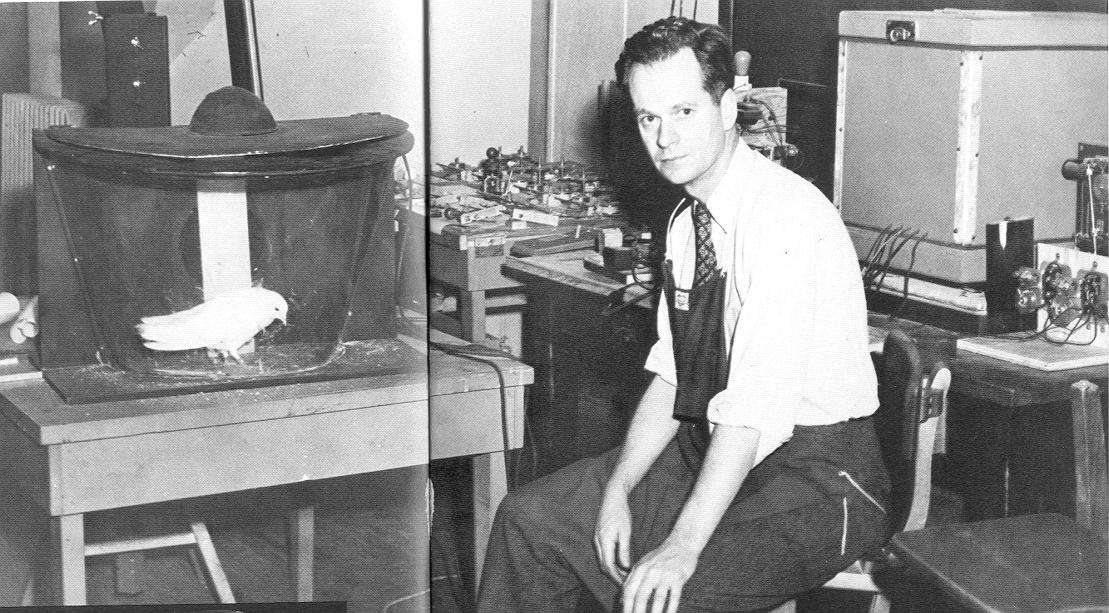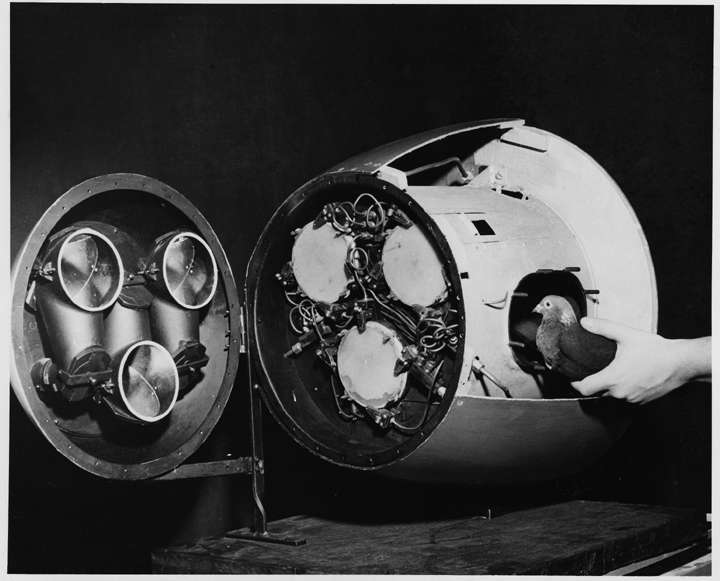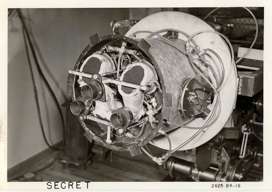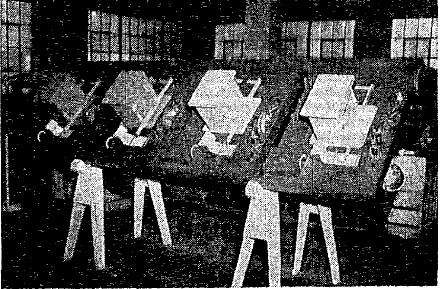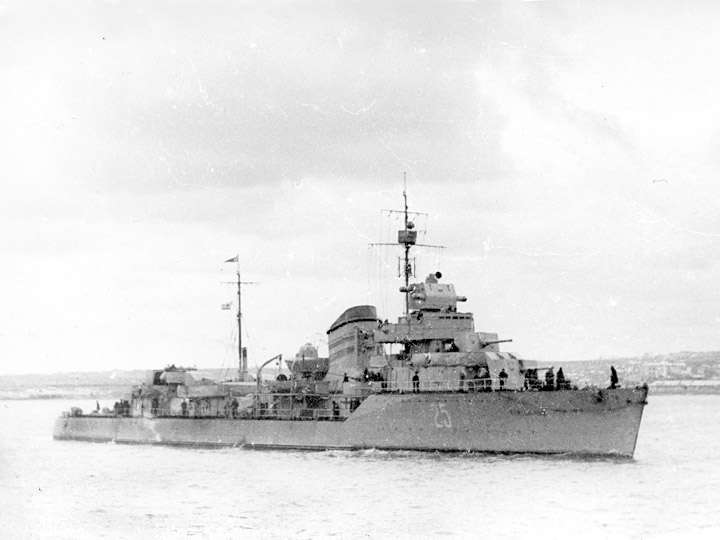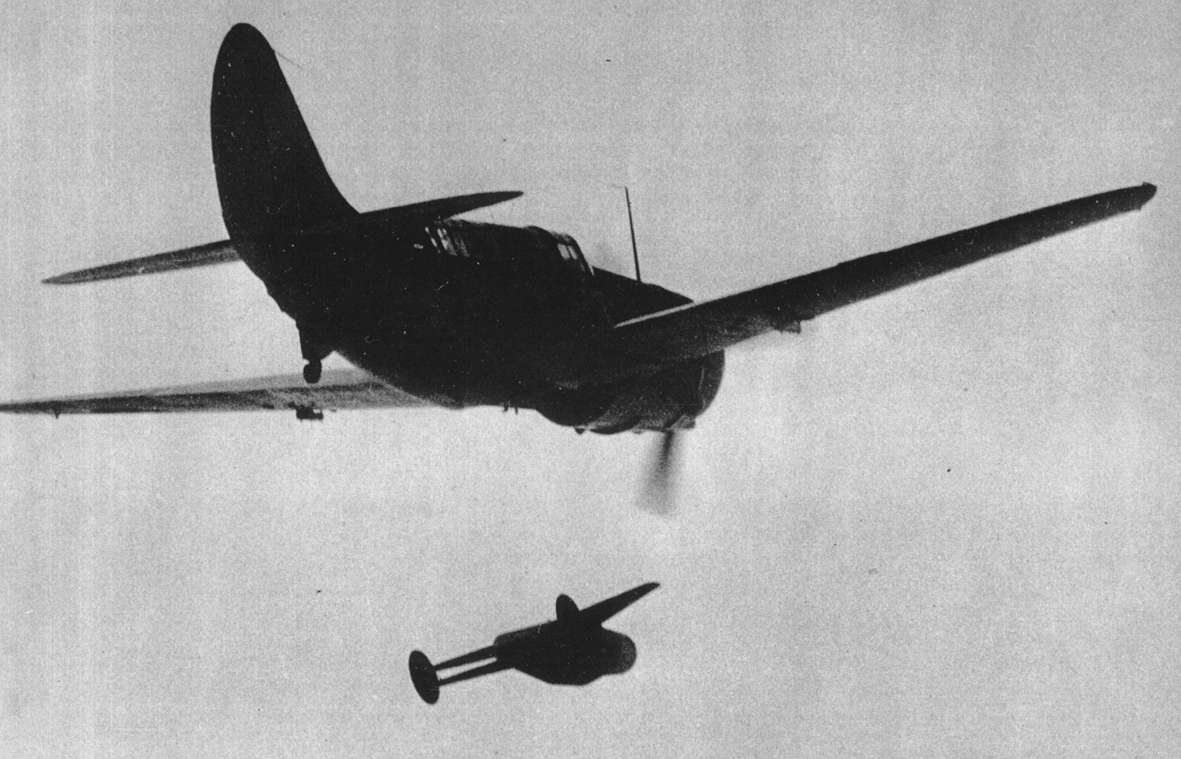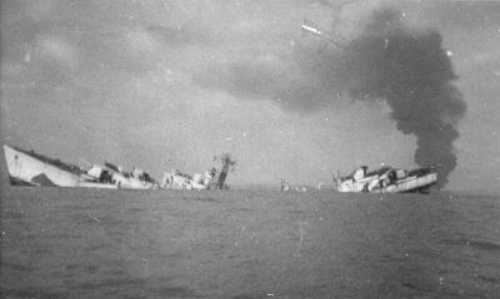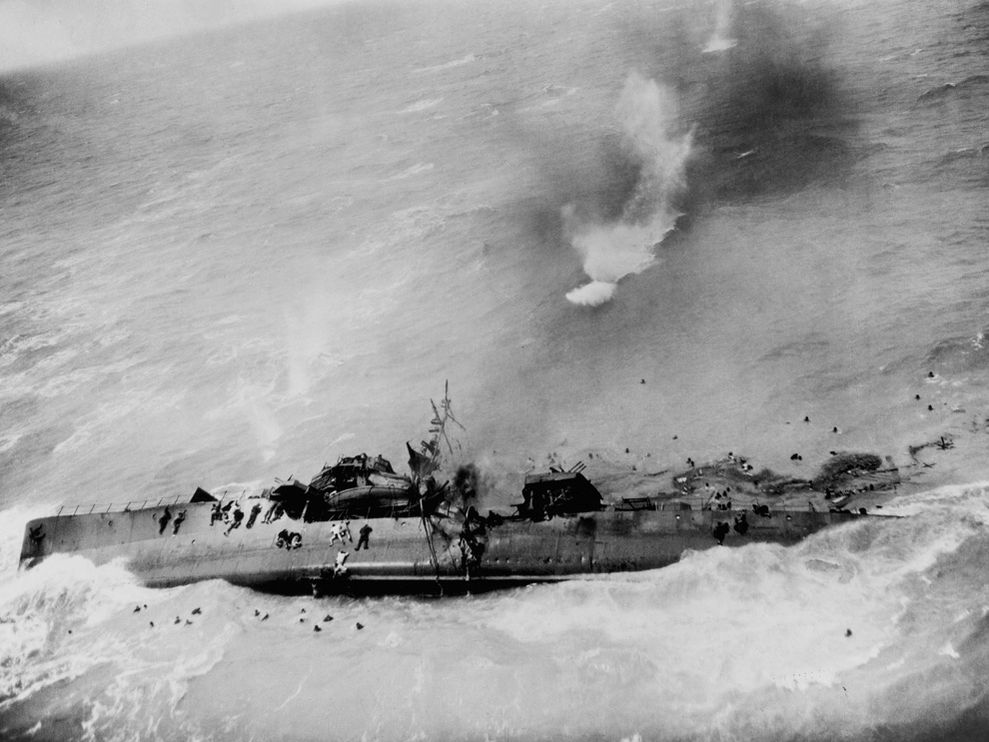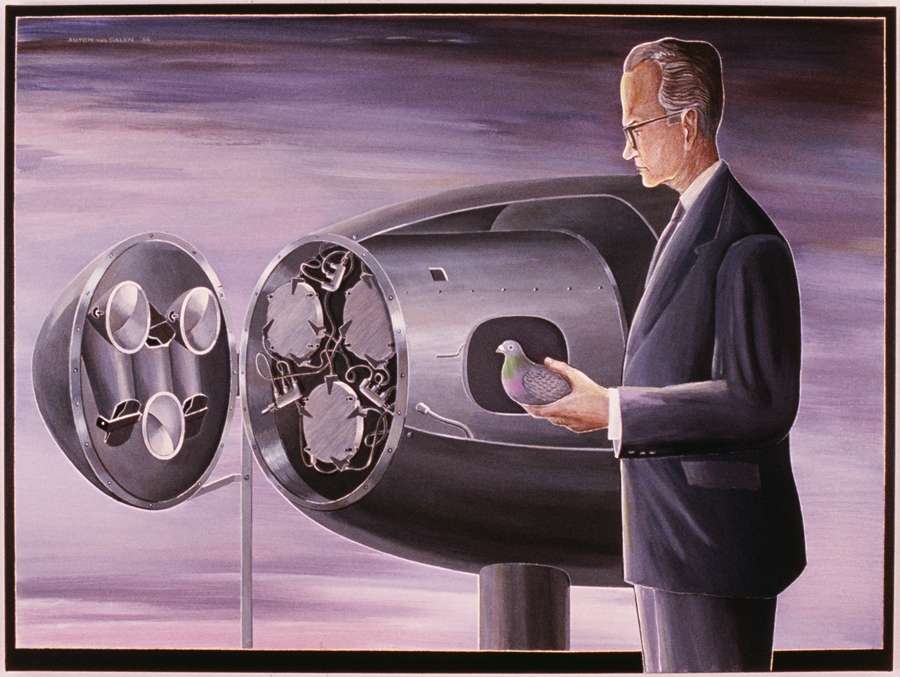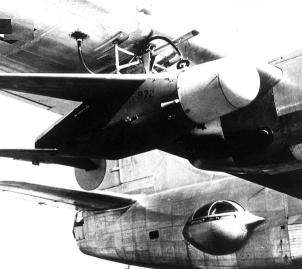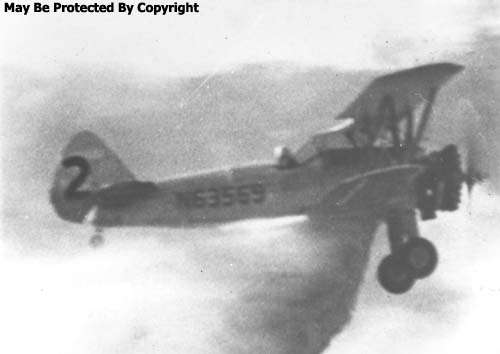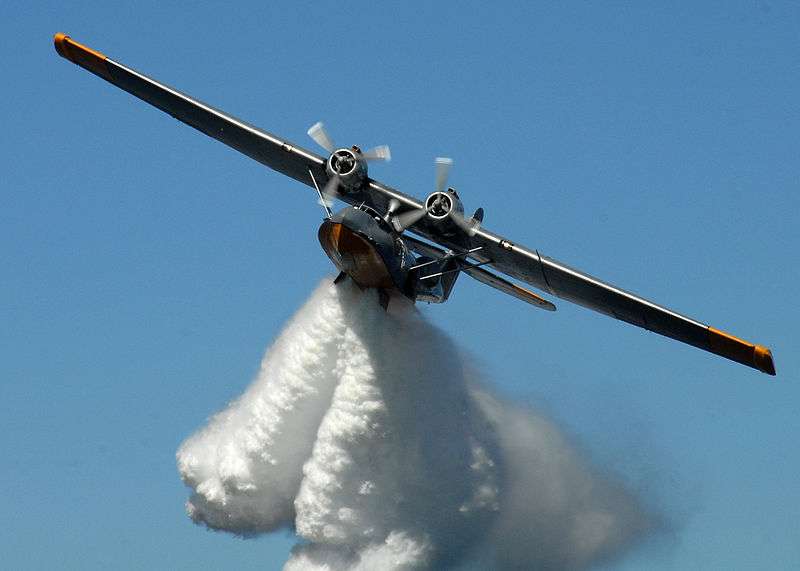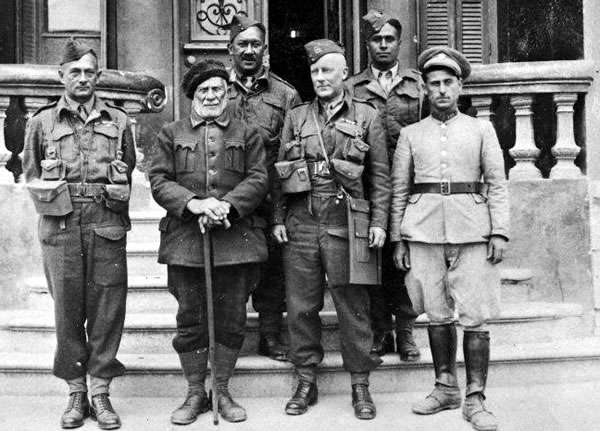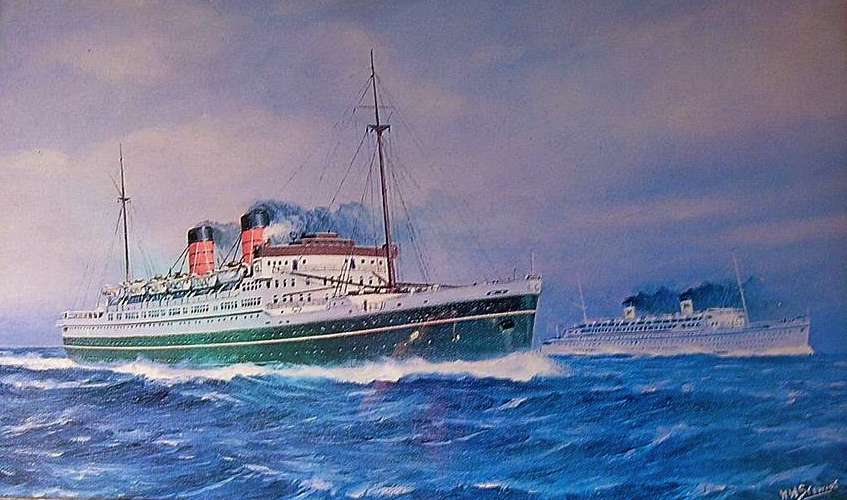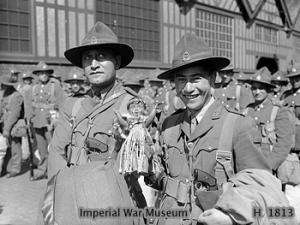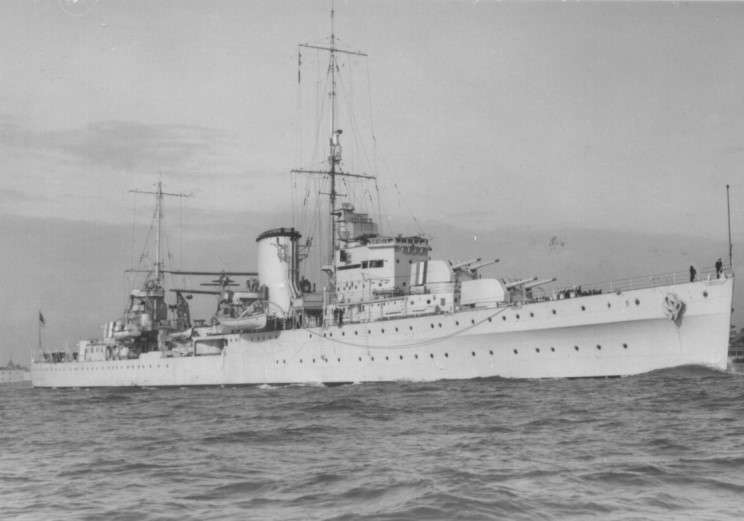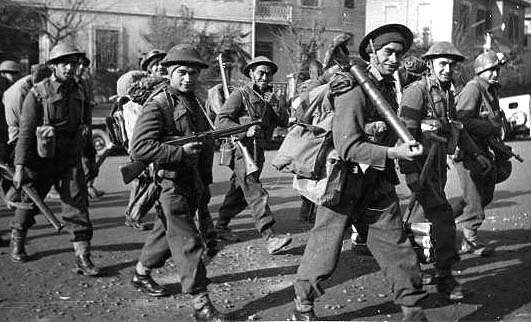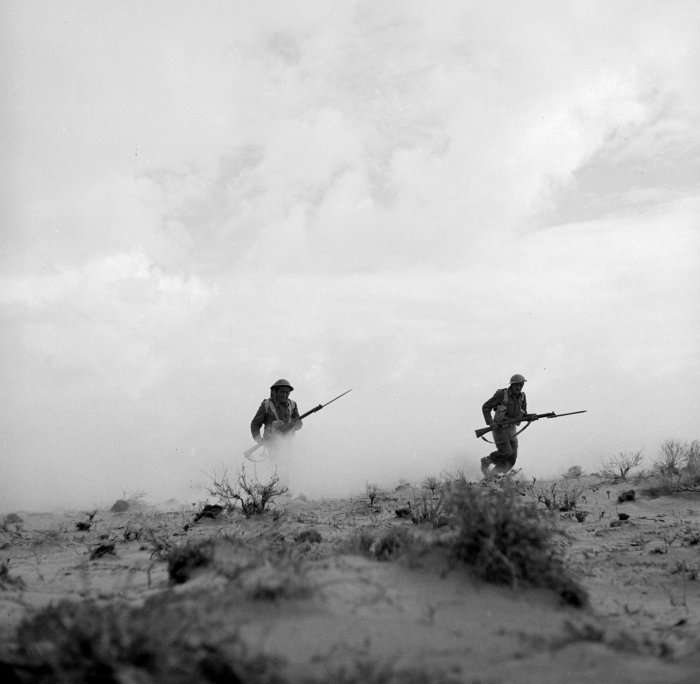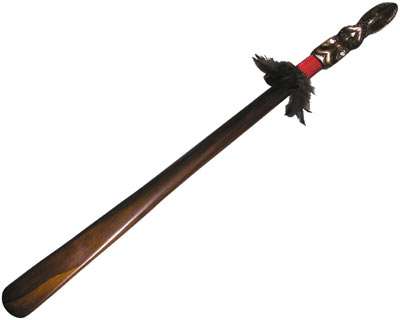The Most Heavily Armed Pigeons in the World - Part I
The Most Heavily Armed Pigeons in the World - Part I
One of the constants in the numerous threats posed by an attack from the Soviet Union that faced the Finnish military was the Soviet Baltic Fleet, based out of the Soviet naval fortress of Kronstadt. The Soviet Baltic Fleet was large, far surpassing the Merivoimat in size and strength, and there was the additional risk of a seaborne invasion by the Soviets anywhere along the long Finnish coastline. A rapid sortie by the Soviet Fleet posed a significant naval threat, and one that the Finnish military continuously sought to counter. This risk was one of the Merivoimat’s chief challenges – and as we have seen in earlier Posts, the Merivoimat sought to counter this through the establishment of a tripod of forces – Submarines, Torpedo Boats and Minefields. In addition, the Merivoimat Air Arm and the Ilmavoimat worked together continuously to research ways and means to successfully attack the Soviet Navy within its heavily defended fortress and at sea from the air – without taking prohibitive losses in doing so. In this, the threat of anti-aircraft fire was a significant factor, as was the accuracy of the bombers.
The problem was that before radar, pilots trying to hit enemy ships had to fly so close that they likelihood of being shot down was high. The risk to aircraft and aircrew of such attacks could be reduced significantly if the attacking bombers could drop their bombs from outside the range of effective anti-aircraft fire. However, no such bombs existed, and even if they did, the problem was posed of how to ensure accuracy. Bombing from height was at best wildly inaccurate, as the Ilmavoimat had proven rather conclusively to themselves in a number of trials. Low-altitude attacks on a heavily-defended target such as Kronstadt ran the risk of the aircraft suffering heavy losses – and the Ilmavoimat could not afford to take heavy losses to achieve just one victory, however significant that victory was. And there was in any case no guarantee of success even if heavy losses were accepted as the price that needed to be paid. What was needed was some sort of technological miracle – and so, the request for just such a miracle to be provided was passed in to the Pääesikunnan Teknillinen Tutkimusyksikkö (Technical Research Unit of the General Staff) who were tasked with coordinating, prioritizing and assigning R&D funding.
It was at this stage, in 1937, that the R&D group assigned this request proposed using a remote-controlled glider-bomb. As with many technologies, there were numerous precursors to the remote-controlled glider-bomb prior to WW2, and the Pääesikunnan Teknillinen Tutkimusyksikkö was briefed on these as part of the request that had been made to design and develop a remote-controlled glider-bomb.
Early Beginnings of Wireless Remote Control – Nikola Tesla
Well before the race for wireless telegraphy and as far back as 1893 in St. Nikola Tesla demonstrated remote control of objects by wireless. This was two full years before Marconi began his experiments. In 1898 at an exhibition at Madison Square Garden Nikola Tesla demonstrated a small boat which could apparently obey commands from the audience but was in fact controlled by Tesla interpreting the verbal requests and sending appropriate frequencies to tuned circuits in the boat. "...What Tesla did was to demonstrate the possibility of remote control by radio waves. In the artificial lake, the audience saw a six-foot, iron-hulled boat decorated with tiny electric lights. Ever the master showman, Tesla invited the crowd to shout out commands, "Turn left! Turn right! Flash the lights!" In response, Tesla signaled the boat using his wireless transmitter and the boat executed the command. With the Spanish-American War just over, Tesla described how he could easily build a larger boat, arm it with dynamite, and then steer it by remote control toward an enemy ship. Here, one hundred years ago, was a prototype for the Cruise missiles of today and the remote-controlled Glide-Bombs of WW2…
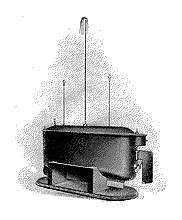
Tesla caused a small boat (above) to obey commands from the audience.
To the press, Tesla prophesied a future in which telautomatons (robots) did man's bidding, perhaps some day exceeding mankind. Tesla had already decided that men were "meat machines", responding only to stimuli and incapable of free will, so to him the succession of man by machine seemed less preposterous. He also chose to join others in the race to use America's newfound technological superiority to devastate the Spanish in the the Spanish-American War. He offered his remote controlled boat to the military as a new kind of "smart-torpedo" that would make war so terrible nations would cease to wage it. The idea of banishing warfare by making it inconceivably horrific was a widely held conceit pretty much up until WWI. On November 8th, 1898, Tesla obtained a patent for the remote control, for which he had applied four months earlier on July 1st. This patent is the basis of contemporary robotics.
Nikola Tesla with his wireless controlled airship c.1900
John Hays Hammond Jr is regarded as the father of radio control due to the fact he was involved in experiments as an apprentice of Thomas Edison at the age of twelve. Hammond was a close friend of Tesla and they performed experiments together in his lab located in his castle. He learned a great deal from his exposure to Tesla. Tesla was granted a US patent on this invention on November 8, 1898. In 1903, the Spanish engineer Leonardo Torres y Quevedo presented the "Telekino" at the Paris Academy of Science, and was granted a patent in France, Spain, Great Britain and the United States. In 1904, Bat, a Windermere steam launch, was controlled using experimental radio control by its inventor, Jack Kitchen. In 1909 the French inventor Gabet demonstrated what he called his "Torpille Radio-Automatique", a radio controlled torpedo.
Gabet demonstrating radio control of his torpedo on the Seine.
Torpille radio automatique Gabet, 24-December-1909:
Torpille radio automatique Gabet, 24-December-1909:
In popular culture, the “Aerial Torpedo” was introduced as early as the 1909 film The Airship Destroyer. An unknown country arms their zeppelins with bombs and launches an air raid on England. After a bombing raid British aircraft engage the zeppelins but are shot down. The bombing raid continues until finally a patriotic British inventor creates an "aerial torpedo," controlled by "wireless electricity," which he uses to bring down the enemy air fleet. To quote from a movie list:"Inspired by Wells, this is one of the first real science fiction films to be made in England. The story concerns an attack on London by a fleet of airships from an unknown country. Through the extensive use of models, buildings were wrecked, prototype tanks destroyed, and railroads blown up. However, the films young hero, an inventor, launches radio controlled aerial torpedoes at the airships, and saves the day." The film was a great success, was directed by Walter Booth and produced by Charles Urban.
Germany
As early as October 1914, Dr. Wilhelm von Siemens had suggested what became known as the Siemens torpedo glider, a wire-guided flying missile which would essentially have been built from a naval torpedo with attached airframe. It was not intended to be flown into a target but rather at a suitable altitude and position a signal would be transmitted causing the airframe components to detach from the torpedo which would then enter the water and continue towards its target. Guidance signals were to be transmitted through a thin copper wire, and guide flares were to be carried to help control.
The Siemens Torpedo Glider hung beneath the hull of Zeppelin L35 - On 2 August 1918, a 1000 kg missile was dropped from airship L35, control could be kept for a distance of 7.5 km.
Siemens-Schuckertwerke was already occupied with remote controlled boats (the FL-boats or Fernlenkboote), and had some experience in this area. Flight testing was performed under the supervision of Dipl. Ing. Dorner from January 1915 onwards, using airships as carriers and different types of biplane and monoplane gliders airframes to which a torpedo was fitted before a biplane layout was adopted due to its greater carrying ability. The first take-offs were perfomed from the Siemens-Schuckert hangar in Biesdorf, later successfull inflight launches from airships followed. The last test flight was performed on 2 August 1918. Approximately 100 of these, of varying sizes and configurations, were built and tested from January 1915 until the project was abandoned in late 1918. Many successful launches were made from naval airships, and controlled distances of nearly five miles achieved with considerable accuracy. The missiles, however, never became operational.
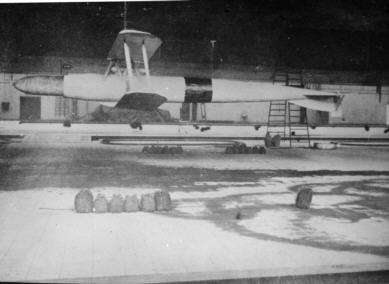
A Photo from the website of the Zeppelin Museum in Tønder, Denmark (German until 1920, this was a famous airship base in WWI with the German name: Tondern)
After the war, the aircraft designer Anthony Fokker revealed that “In 1916 the [German] Army authorities asked me if I could make a very cheap aeroplane with a very cheap engine, capable of flying about four hours, which could be steered through the air by wireless waves. They intended to load each one of these aeroplanes which a huge bomb and send them into the air under the control of one flying man, who would herd them through the sky by wireless like a flock of sheep. He would be able to steer them as he pleased, and send them down to earth in just exactly the spot he selected.” Just what spots would have been selected, Fokker didn't say. He claimed that he was about to start churning out these flying bombs when the Armistice was declared. And indeed, one of the conditions imposed on Germany under the Versailles treaty was a ban on the manufacture of 'air machines which can fly without a pilot'.
Research and development on such weapons in Germany only resumed after the Second World War had started.
The Soviet Union
Little is known and even less documented about research programs rearding remote-controlled weapons in the Soviet Union in the inter-war years other than that they existed and that in the 1930’s, the USSR developed a range of remotely radio-controlled weapons. These included “teletanks”, teleplanes (apparently a remote-controlled Tupolev TB-3) and telecutters. Very little information is available on any of these projects or their results. Perhaps the single major exception being the Red Army’s use of Teletanks against the Finns in the Winter War, which was documented by the Finns – where the teletanks saw their first combat use.
A teletank was controlled by radio from a control tank at a distance of 500–1,500 meters, the two constituting a telemechanical group. Teletanks were equipped with machine guns, flamethrowers, smoke canisters and sometimes a special 200–700 kg time bomb in an armored box, dropped by the tank near the enemy's fortifications and used to destroy bunkers up to four levels below ground. Teletanks were also designed to be capable of using chemical weapons, although they were not used in combat. Each teletank, depending on its model, was able to recognize sixteen to twenty-four different commands sent via radio on two possible frequencies to avoid interference and jamming. Teletanks were built based on T-18, T-26, T-38, BT-5 and BT-7 tanks. Standard tactics were for the control tank (with radio transmitter and operator) to stay back as far as practicable while the teletank (TT) approached the enemy. The control tank would provide fire support as well as protection for the radio control operator. If the enemy was successful at seizing the teletank, the control tank crew was instructed to destroy it with its main gun. When not in combat the teletank was driven manually.
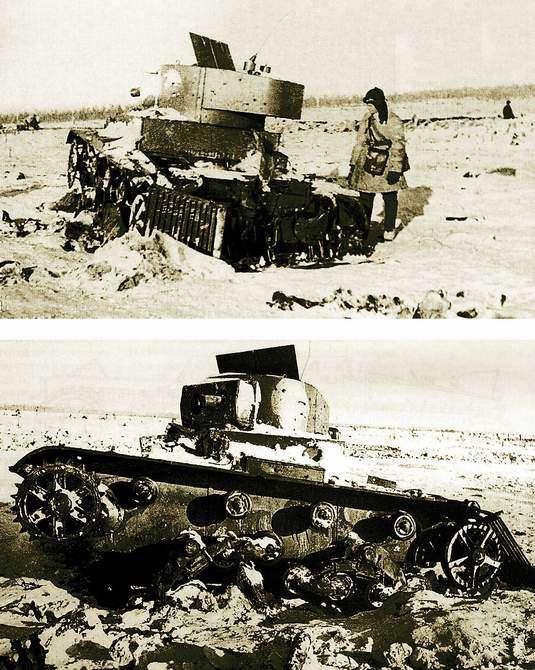
Shot-up TT-26 remotely-controlled tank (teletank) with TOZ-IV telematics equipment from 217th separate tank battalion of the 30th Tank Brigade. Two antenna leads on the turret roof and two-colour camouflage of the vehicle are visible. Karelian Isthmus, February 1940.
OTL, the USSR also planted radio-controlled landmines in Vypuri but these were unable to be detonated as a result of Finnish jamming of the wavelengths used to transmit signals to the mines.
The United States
In the United States, the first attempts to create an airborne counterpart of the naval torpedo took place in the United States during World War I. A pilotless plane (considered by many to be the precursor of today’s cruise missle) was to be guided to a target and crashed into it in a power dive, exploding its charge. In 1916-17 a prototype called the Hewitt-Sperry Automatic Airplane made a number of short test flights proving that the idea was sound.
The Hewitt-Sperry Automatic Airplane
Before World War I, the possibility of using radio to control aircraft intrigued many inventors. One of these, Elmer Sperry, succeeded in arousing the US Navy's interest. Sperry had been perfecting gyroscopes for naval use since 1896 and had established the Sperry Gyroscope Company in 1910. In 1911, airplanes had only been flying for eight years, and yet Sperry became intrigued with the concept of applying radio control to them. He realized that for radio control to be effective, automatic stabilization would be essential, so he decided to adapt his naval gyro-stabilizers (which he had developed for destroyers). In 1913, the Navy provided Sperry with a flying boat to test and evaluate the gyro-based autopilot. Sperry's son Lawrence served as an engineer during the test phase. In 1914, Lawrence Sperry was in Europe and observed the developing techniques of aerial warfare, including the use of aircraft.
In 1916, the two Sperrys joined Peter Hewitt, an early inventor of radio-related devices, to develop an explosive-laden pilotless airplane. Elmer Sperry and Peter Hewitt served together on the Naval Consulting Board, where they both were members of the Committee on Aeronautics and Aeronautical Motors. Because of these connections, they were able to arrange for a representative of the Navy's Bureau of Ordnance, Lt. T. S. Wilkinson, to examine the control equipment they had assembled. The system consisted of a gyroscopic stabilizer, a directive gyroscope, an aneroid barometer to regulate height, servo-motors for control of rudders and ailerons, and a device for distance gearing. These could all be installed in an airplane which could be launched by catapult or flown from the water, and would then climb to a predetermined altitude, fly a pre-set course, and after traveling a pre-set distance, drop its bombs or dive to the ground. Wilkinson reported that the weapon did not possess a degree of accuracy sufficient to hit a ship, but, because of its range of 50 to 100 miles (160 km), it might be of interest to the Army.
The Curtiss-Sperry Flying Bomb
After the US declaration of war on Germany, Sperry began urging the Navy to revisit the idea. The Naval Consulting Board supported him, and formally requested the Secretary of Navy to allocate $50,000 for the work. The government thus included the development of the flying bomb or aerial torpedo in its war preparations. The Senate went so far as to establish two classes for the type weapon, one for wireless control, the other for completely automatic operation. Final approval came on May 17, 1917, and the Navy agreed to provide five (later upped to seven) Curtiss N-9 seaplanes and to purchase six sets of the Sperry automatic control gear. Navy Secretary Josephus Daniels agreed to spend $200,000 on the project, with the money to be administered by the Bureau of Ordnance, the Bureau of Construction and Repair and the Bureau of Engineering. The operation was established at Copiague, Long Island.
The autopilot equipment was already designed, but the radio control system hadn't been fully developed, so while the hangars were being built at Copiague, Sperry turned his attention to this aspect, purchasing rights to a number of patented radio-related inventions. Ultimately, though, the radio control systems were not used on the Hewitt-Sperry Automatic Airplane. Later, in 1922, the system was installed on several Verville-designed planes along with gear for the Army Air Services engineering division. These aircraft successfully hit their targets from ranges of 30, 60 and 90 miles (140 km).
The first test flights of an autopilot-equipped aircraft took place in September, 1917, with a human pilot onboard to fly the takeoff. By November 1917, the system was successfully flying the aircraft to its intended target at a 30-mile (48 km) range, where the distance-measuring gear would drop a bag of sand. Accuracy was within two miles (3 km) of target. Having observed the test flights, Rear Admiral Ralph Earle proposed a program to eliminate the German U-boat threat, one element of which was to use flying bombs, launched from Navy ships, to attack the submarine bases at Wilhelmshaven, Cuxhaven and Heligoland. Ultimately this plan was rejected, but there was an element of prophecy, for in September 1944, during World War II, a modified B-24 flying as a drone attacked the submarine installations at Heligoland. Not only was Earle's recommendation rejected, but the Navy declared that though development of the system was to continue, no production resources were to be diverted to it, and it was not to go into production.
After the Curtiss N-9 flight test program got started, it became apparent that a more efficient airframe was needed. Because war production deliveries could not be diverted, a special, rush order was placed with Curtiss in October, 1917, for six planes of unique design, with an empty weight of 500 lb (230 kg), top speed of 90 mph (140 km/h), range of 50 miles (80 km) and the capability of carrying up to 1,000 lb (450 kg) of explosives. They became known as the Curtis-Sperry Flying Bomb. Because this was to be a design dedicated to the remote control concept, the planes were not equipped with seats or standard pilot controls. No flight or wind-tunnel testing of the design was performed before production began. The first was delivered on November 10, 1917.
One of the most daunting challenges to the designers was the launch mechanism. The original concept envisioned by Hewitt and Sperry was a catapult mechanism or from the water (the N-9s were seaplanes, the Curtis-Sperry Flying Bomb was not). For the Flying Bomb, it was decided to try to launch it by sliding it down a long wire. In November and December 1917, three attempts were made to launch the Flying Bomb. On the first launch, one wing was damaged as the plane went down the wire, and on the second, the plane lifted from the wire but immediately plunged to the ground. The wire method was then abandoned in favor of a traditional catapult with a 150-foot (46 m) track, with power obtained from a 3-ton weight being dropped from a height of 30 feet (9.1 m).
Curtiss-Sperry Flying Bomb on the traditional catapult with a 150-foot (46 m) track
On the third try, the plane lagged behind the cart, damaging the propeller, and the plane flipped over its nose. Two more attempts in January, 1918, saw the plane get airborne, but it was too tail-heavy, so it stalled and crashed almost immediately. It was realized that some flight test evaluation of the aircraft's capabilities was necessary. One of the planes was then fitted out with sled runners for landing gear, a seat and standard control stick, and Lawrence Sperry decided that he would be the test pilot. While taxiing it on ice, he hit some slushy snow, and wrecked the plane, though Sperry was unhurt. A second airplane was fitted out, and Sperry managed to get it in the air, but lost control when the automatic pilot was engaged. After two complete rolls, Sperry managed to regain control and land safely.
Clearly, though, more attention to flight testing the basic design was needed, particularly in the area of handling qualities. Sperry and his assistant, N. W. Dalton, obtained a Marmon automobile, and mounted the Curtiss-Sperry Flying Bomb to the top of it. In this configuration, Sperry and his crew drove the Long Island Motor Parkway at 80 mph (130 km/h), one of the first examples of an open-air wind tunnel, and adjusted the flight controls to what they thought was the optimum settings. The design of the fuselage was changed slightly, lengthening it by two feet. The Marmon was not only an excellent way to adjust the flight controls, it was realized that it would also be a good launching platform, and this was tried on March 6, 1918. The aircraft left the car cleanly, and flew in stable flight for the 1,000 yards (910 m) that the distance-measuring gear had been set for. For the first time in history, an unmanned, heavier-than-air vehicle had flown in controlled flight.
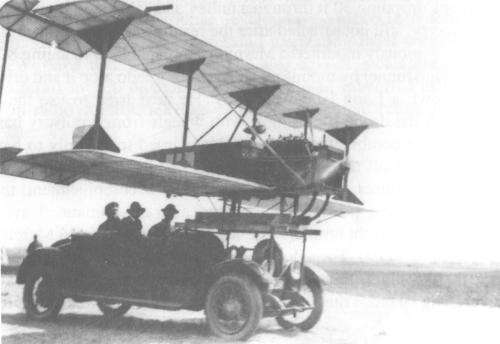
Curtiss-Sperry Flying Bomb mounted on the Marmon automobile
The feat, however, could not be duplicated, and it was thought that the roadway was too rough. The Marmon was fitted with railroad wheels, and an unused spur of the Long Island Rail Road, four miles (6 km) east of Farmingdale, New York was put back into service. On the first try, before full flying speed had been reached, the aircraft developed enough lift to raise the front wheels off the track, and another crash resulted. It was time to re-think the catapult system, and to help design it, Sperry and Hewitt hired a young and promising engineer named Carl Norden. The first try with the new system was in August, 1918, and it too resulted in a crash. Two more tests were tried, with the stabilization package that had been design for the Flying Bomb replaced with the four-gyro system used earlier on the N-9 tests, but the result was again a disappointment, with very short flights ending in crashes. On the last one, on September 26, the Flying Bomb climbed straight for about a hundred yards, then entered a spiral dive and crashed.
This was the final flight for the Curtiss-Sperry Flying Bomb, as all the usable airframes had been consumed in crashes, and there remained no confidence in the design. Sperry and Hewitt returned to the Curtiss N-9.
Return of the Curtiss N-9 Seaplane
The Sperrys then built a wind tunnel at the Washington Navy Yard and carried out a series of tests on the Curtiss N-9, fine-tuning the design. On October 17 1918, an unmanned N-9 was launched using the new Norden catapult system. It came cleanly off the track, climbed steadily and flew within 2° of the line of intended flight. The distance gear had been set for a flight of eight miles (13 km), but somehow malfunctioned. When last seen, the Curtiss N-9 was cruising over Bayshore Air Station at about 4,000 feet (1,200 m), heading east. It was never seen again.
Despite the success of the stabilization gear, there was doubt in the Navy about the program, and they asked Carl Norden to review the Sperry components and recommend improvements. The Navy was, by now, satisfied with the concept, and was contemplating purchasing such equipment on its own, apart from the Sperrys. Elmer Sperry tried to stir up enthusiasm again, calling the concept of the flying bomb the "gun of the future". This was to no avail, however. World War I came to a close when the Armistice was signed on November 11, 1918. Almost a hundred flights had been flown in the N-9, but almost all of these had a safety pilot onboard. The Navy took complete control of the program from Sperry, spelling the end of the Hewitt-Sperry Automatic Airplane program.
The Kettering Bug
The Curtiss-Sperry "Flying Bomb" was one of two American efforts during World War I to develop what would today be called a cruise missile. The other was the Dayton Wright Liberty Eagle, better known as the Kettering "Bug". In November 1917 Army representatives had witnessed one of the Curtiss-Sperry flights and decided to start a similar aerial torpedo, or flying bomb, project which could hit a target at a range of 40 miles. This was to be led by Lieut. Col. Bion J. Arnold for the Air Service and Charles Kettering of Dayton, Ohio for industry. The latter was assisted by Orville Wright, who acted as an aeronautical consultant on the project and C.H. Wills of the Ford Motor Company. Elmer Ambrose Sperry designed the control and guidance system. Various companies working together produced 20 complete pilotless aircraft (called the Kettering Aerial Torpedo but later known as the Kettering Bug and built by the Dayton-Wright Airplane Company. A piloted development aircraft was built as the Dayton-Wright Bug),
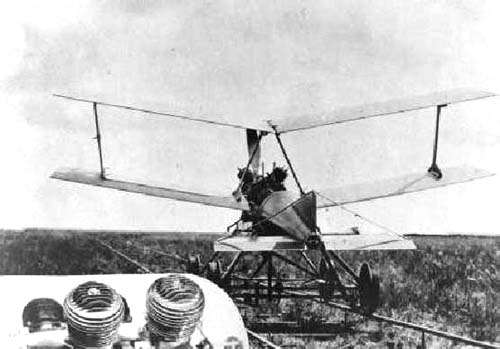
The Kettering Bug was an experimental aerial torpedo, capable of striking ground targets up to 75 miles (120 km) from its launch point, while traveling at a speed of 50 mph. The aircraft was powered by one 4-cylinder, 40-horsepower De Palma engine. The engine was mass-produced by the Ford Motor Company for about $40 each. The fuselage was constructed of wood laminates and papier-mâché, while the wings were made of cardboard. The "Bug" could fly at a speed of 50 mph with a payload of 180 pounds (81kg) of explosives. Total cost of each "Bug" was US$400.
The Bug was launched using a dolly-and-track system, similar to the method used by the Wright Brothers when they made their first powered flights in 1903. Once launched, a small onboard gyroscope guided the aircraft to its destination. The control system used a pneumatic/vacuum system, an electric system and an aneroid barometer/altimeter. To ensure the Bug hit its target, a mechanical system was devised that would track the aircraft's distance flown. Before takeoff technicians determined the distance to be traveled relative to the air, taking into account wind speed and direction along the flight path. This was used to calculate the total number of engine revolutions needed for the Bug to reach its destination. When a total revolution counter reached this value a cam dropped down which shut off the engine and retracted the bolts attaching the wings, which fell off. The Bug began a ballistic trajectory into the target; the impact detonated the payload of 180 pounds (81 kg) of explosives.
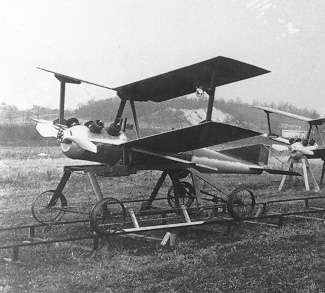
Kettering Bug on the dolly and ready to be launched
The prototype Bug was completed and delivered to the Aviation Section of the U.S. Army Signal Corps in 1918, near the end of World War I. The first flight on October 2 (or October 4th, sources differ), 1918 was a failure: the plane climbed too steeply after takeoff, stalled and crashed. Subsequent flights were successful, and the aircraft was demonstrated to Army personnel at Dayton. "The Kettering Bug had 2 successes on 6 attempts at Dayton, 1 of 4 at Amityville, and 4 of 14 at Carlstrom." Despite some successes during initial testing, the "Bug" was never used in combat. Officials worried about their reliability when carrying explosives over Allied troops. By the time the War ended about 45 Bugs had been produced. From April 1917 to March 1920 the US Government spent about $275,000 on the Kettering Bug. The aircraft and its technology remained a secret until World War II. During the 1920s, what was now the U.S. Army Air Service continued to experiment with the aircraft until funding was withdrawn entirely in 1925.
Follow-on US Programs
During the early post-WW1 years, the US Navy's Bureau of Ordnance decided to follow up one aspect of the over-all problem of the aerial torpedo and to develop a radio-controlled plane. For the first program, the Navy ordered five examples of a new airframe design from Witteman-Lewis and Norden-designed gyrostabilizers were used, first flying in March 1919 but the results were no better than those achieved by the Sperrys and the wprogram was terminated in 1922. In 1921, the program was reoriented to focus on the radio control aspect. The control equipment was developed at the radio laboratory at NAS Anacostia (later the Naval Research Laboratory). In 1923, tests began, and were relatively successful and a successful flight without a pilot aboard took place on Sept. 15, 1924; but the plane was damaged in landing and sank but interest waned and the project lapsed in 1925.
Over a decade was to pass before the US Navy again looked into the development of target drones and pilotless aircraft, by which time developments in electronics and progress in aviation produced results which were later applied to missiles. The U.S. Navy re-entered the field of unmanned aircraft in earnest inthe mid-1930s, when several manned aircraft of different types were converted to radio-controlled drones, a program which was intended to provide realistic targets for antiaircraft gunnery practice but which went on to directly influence post-war missile development. These experiments would eventually lead to the TDR and TDN "assault drones" of World War II. Lieutenant Commander (later Rear Adm.) D.S. Fahrney was in charge of the drone project. The plane used was a Stearman-Hammond JH-1 and / or a Curtiss "N2C-2" drone (again, sources differ), and the radio control equipment was again developed by the Naval Research Laboratory. This drone made its first successful flight Nov. 15, 1937. The N2C-2 was remotely controlled from another aircraft, called a TG-2. N2C-2 anti-aircraft target drones were in service by 1938 and first used for target practice by the antiaircraft batteries of the USS Ranger. Commander Fahrney then suggested the development of assault drones.

A U.S. Navy Curtiss N2C-2 Fledgling converted into a target drone at the Naval Aircraft Factory, Philadelphia, Pennsylvania (USA), 1938/39. Note that the aircraft has been fitted with a tricycle landing gear.
The US Army Air Forces (USAAF) adopted the N2C-2 concept in 1939. Obsolescent aircraft were put into service as "A-series" anti-aircraft target drones. Since the "A" code would be also used for "Attack" aircraft, later "full-sized" targets would be given the "PQ" designation.
The "Radioplane Company"
The first large-scale production, purpose-built radio-controlled drone was the product of one Reginald Denny. Denny had served with the British Royal Flying Corps during World War I, and after the war, immigrated to the United States to seek his fortune in Hollywood as an actor, where he did in fact make a name for himself. Between acting jobs, he pursued his interest in radio controlled model aircraft in the 1930s. He and his business partners formed "Reginald Denny Industries" and opened a model plane shop in 1934 on Hollywood Boulevard known as "Reginald Denny Hobby Shop". The shop evolved into the "Radioplane Company".
Denny believed that low-cost RC aircraft would be very useful for training anti-aircraft gunners, and in 1935 he demonstrated a prototype target drone, the RP-1, to the US Army, although the Army did not buy the aircraft. Denny then bought a design from Walter Righter in 1938 and began marketing it to hobbyists as the "Dennymite", and demonstrated it to the Army as the RP-2 in 1938, then after further modifications, as the RP-3 and RP-4 in 1939.
Just as a note of interest and not as part of this ATL, in 1940, Denny and his partners won an Army contract for their radio controlled RP-4, which became the Radioplane OQ-2. They manufactured nearly fifteen thousand drones for the army during World War II. It was at the Van Nuys Radioplane factory in 1944 that Army photographer David Conover saw a young lady named Norma Jeane, and thought she had potential as a model. This "discovery" led to fame for Norma Jeane, who soon changed her name to Marilyn Monroe.
Marilyn Monroe was a technician at the Radioplane munitions factory when she was photographed at her job by Yank magazine in 1944

